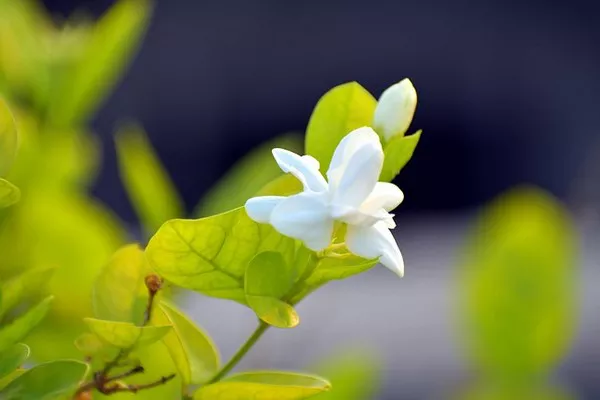Air plants, scientifically known as Tillandsia, have gained popularity as low-maintenance houseplants and decorative elements. These unique plants don’t require soil to grow, making them ideal for creative indoor displays. While most air plants are propagated through offsets or pups, growing them from seeds can be a rewarding and educational experience. In this article, we will explore the process of growing air plants from seeds, from seed collection and preparation to care and maintenance.
Step 1: Collecting Air Plant Seeds
Before you can begin growing air plants from seeds, you’ll need to obtain seeds. Keep in mind that air plant seeds are not as readily available as seeds for traditional plants, and the process of collecting them can be somewhat challenging. Here are some tips for obtaining air plant seeds:
Purchase Seeds: Some specialty nurseries and online retailers may offer air plant seeds for sale. Look for reputable sources to ensure the quality of the seeds.
Collect Seeds from Mature Plants: If you have mature air plants, you can attempt to collect seeds from them. Air plants typically produce seeds after flowering. Wait until the flowers have wilted, and you notice small seed pods forming at the base of the flower spike. Harvest the pods when they turn brown and begin to crack open.
Trade or Network: Connect with other air plant enthusiasts or join plant forums and communities. Sometimes, fellow enthusiasts are willing to trade or share seeds.
Step 2: Preparing the Seeds
Once you have obtained air plant seeds, the next step is to prepare them for germination. Here’s how to do it:
Clean and Separate: Remove the seeds from the seed pods carefully. Use a fine mesh strainer to separate the seeds from any debris or chaff.
Soak in Water: Place the seeds in a container of room-temperature water. Let them soak for 12-24 hours. This step helps to soften the seed coat and enhance germination.
Dry the Seeds: After soaking, spread the seeds on a paper towel or clean surface to dry. Make sure they are completely dry before moving on to the next step.
Step 3: Sowing the Seeds
Now that your air plant seeds are ready, it’s time to sow them. Here’s a simple guide on how to sow air plant seeds:
Choose a Suitable Medium: Air plant seeds are tiny, so you’ll need a fine and well-draining growing medium. A mixture of fine orchid bark and perlite is a popular choice.
Fill a Seed Tray or Small Pots: Fill a seed tray or small pots with the chosen growing medium. Moisten the medium lightly, so it’s damp but not waterlogged.
Sow the Seeds: Sprinkle the air plant seeds evenly across the surface of the growing medium. Press them gently into the medium, ensuring good seed-to-medium contact.
Cover with Plastic or a Dome: Cover the seed tray or pots with clear plastic or a plastic dome to create a mini greenhouse effect. This helps maintain humidity and moisture levels.
Place in Indirect Light: Keep the seeds in a bright, indirect light location. Avoid direct sunlight, as it can be too harsh for the delicate seedlings.
Step 4: Germination and Early Care
The germination period for air plant seeds can vary, but it typically takes several weeks to a few months. Here are some important care instructions during this crucial stage:
Maintain Humidity: Check the humidity inside the mini greenhouse regularly. The humidity should remain high, but if condensation forms on the inside of the plastic, allow some airflow to prevent mold growth.
Water Sparingly: Keep the growing medium consistently moist but not soggy. Use a spray bottle to mist the surface as needed to maintain moisture levels.
Transplanting: When the seedlings have developed several true leaves and are large enough to handle, they can be carefully transplanted into individual containers or larger pots with a suitable air plant growing mix.
Step 5: Continued Care and Growth
Once your air plant seedlings have been successfully transplanted, they will require ongoing care to thrive. Here are some essential care guidelines:
Light: Provide bright, indirect light for your air plant seedlings. They should not be exposed to direct sunlight, which can scorch their delicate leaves.
Watering: As your air plants grow, mist them regularly to provide adequate moisture. Submerge the plants in water for 20-30 minutes once a week to ensure they receive the necessary hydration. Shake off excess water and allow them to dry upside down before returning them to their display.
Temperature and Air Circulation: Maintain a consistent temperature between 50°F to 90°F (10°C to 32°C) and ensure good air circulation to prevent stagnant air around the plants.
Fertilization: Air plants are light feeders, so fertilize them sparingly. Use a balanced, water-soluble fertilizer diluted to half strength and apply it during the growing season (typically spring and summer) every 4-6 weeks.
Display: Get creative with your air plant display! These plants can be placed in terrariums, on driftwood, or in decorative containers. Just ensure they receive the light and airflow they need.
Conclusion
Growing air plants from seeds is a unique and rewarding endeavor for plant enthusiasts. While it may require some patience and careful attention, the process can lead to the creation of beautiful air plant displays that thrive indoors. By following the steps outlined in this comprehensive guide, you can successfully cultivate air plants from seeds and enjoy their beauty and uniqueness in your home. Remember that each air plant has its own unique characteristics and requirements, so adapt your care routine accordingly, and you’ll be rewarded with healthy, vibrant plants that will capture the attention of all who see them.


